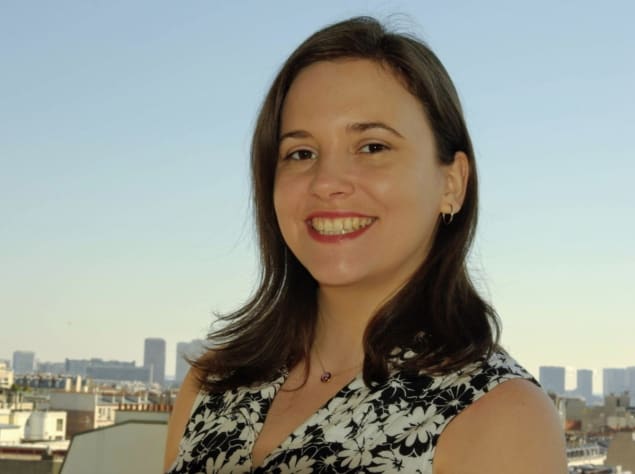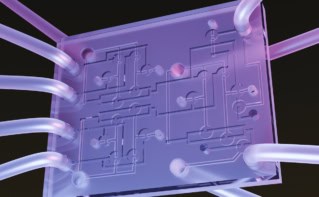The Nicholas Kurti Science Prize aims to help young physicists establish their own research programmes and raise their profile among the wider scientific community

This year’s Nobel prize for physics, announced in early October, was awarded to three scientists who laid the theoretical groundwork for understanding complexity in physical systems. Their fundamental insights have had far-reaching consequences across many different areas of scientific research, ranging from the chaotic dynamics of climate change through to the effects of disorder in exotic states of matter.
While this year’s Nobel prize celebrated the long-lasting impact of work that was done several decades ago, it is just as important to recognize the achievements of early-career researchers and how they might influence the science of the future. For that reason Oxford Instruments NanoScience has since 2005 sponsored the Nicholas Kurti Science Prize, awarded by a panel of leading academics to young European researchers who have pioneered novel experimental techniques that exploit low temperatures or high magnetic fields – or sometimes both.
“Receiving the Nicholas Kurti prize was a great honour,” says Tino Gottschall, the winner of the 2021 prize. “I strongly believe that it will be a real booster for my scientific career.”
Gottschall, who studies magnetic materials at the Dresden High Magnetic Field Laboratory (HLD) at the Helmholtz-Zentrum Dresden-Rossendorf (HZDR) in Germany, is particularly pleased that his modern-day research is directly descended from the work of Nicholas Kurti. While working at Oxford University in the 1960s, Kurti used a technique called magnetic refrigeration to reach lower temperatures than had ever been achieved before – down to one microkelvin. Today, Gottschall is exploiting the same technique at room temperatures to develop cooling devices that offer a greener alternative to conventional refrigerators.
Gottschall explains that magnetic cooling exploits materials that exhibit a strong magnetocaloric effect – in other words, the temperature of the material changes when it is exposed to a rapidly changing magnetic field. The spins in these materials are usually disordered, and only become aligned when a magnetic field is applied. “Going from a disordered state to an ordered state reduces the entropy in the material,” says Gottschall. “If the magnetic field is applied quickly enough, this entropy is transferred from the magnetic system to the crystal lattice. The atoms vibrate more vigorously and the temperature of the material increases.”
The opposite happens when the magnetic field is removed: the spins fall back into the disordered state and the material cools down. “We can use these effects to build a machine that acts as a refrigerator,” says Gottschall. “The big advantage at room temperatures is that we only need water to pump the heat, which makes it much more environmentally friendly than the gaseous refrigerants typically used today.”
To investigate the properties of these magnetocaloric materials, Gottschall exploits pulsed-field magnets designed and built at the HLD that can deliver field strengths of up to 100 T for short periods of time, typically a few milliseconds. For the rare-earth element gadolinium, for example, he measured a temperature increase of 60 K when the pulsed field reached 60 T. “In the very moment the field goes back to zero the temperature change also goes back to zero,” he says. “It’s really fascinating. There is no other class of materials that can do such a thing.”
One of the big experimental challenges for Gottschall is to precisely measure the temperature of the sample within such short timescales, which he has achieved by creating thermocouples as thin as 35 µm. Other material properties need to be quantified at the same time, particularly changes in length and volume that can be quite pronounced in magnetocaloric materials, while Gottschall also uses a calorimeter based on a static 16 T superconducting magnet to record the heat capacity of the samples over a wide temperature range. “Pulsed-field experiments are unique because they offer the opportunity to measure temperature changes as well as kinetic effects, but we also need static conditions to get the full picture and enable us to optimize the materials,” he says.
Gottschall is now keen to explore the potential of magnetic cooling for the liquefaction of hydrogen, a crucial process for storing and transporting large amounts of hydrogen fuel. The current technology is extremely energy-intensive, with efficiencies of just 20–25%, which means that the liquefaction process consumes almost all of the energy contained inside the hydrogen. Gottschall believes that magnetic refrigeration has the potential to make the process much more efficient. He is currently applying for research grants, and hopes that winning the Nicholas Kurti prize will provide an important external endorsement to bolster his research proposals.
“Of course publications and citations are crucial, but the people who make decisions about research funding are often not experts in the field,” he says. “This kind of recognition is really important to raise the funding I need to push my research forwards.”

Rebeca Ribeiro-Palau, who shared the 2020 prize for her work on two-dimensional materials, agrees that this external recognition can boost the profile of early-career researchers. “It’s really important to get your name known within the research community,” she says. “If people are more familiar with your work, it might you help you to get a better job, raise some research funding, or establish new connections and collaborations.”
Ribeiro-Palau points out that it can be very difficult for younger researchers to promote their research to the wider research community. “It’s not easy when you are just starting,” she says. “As a junior researcher you don’t get invited to conferences as often as senior academics because the organizers always ask the big names.” For that reason, along with a cash prize of €8000, the Nicholas Kurti award includes financial support for the winner to attend and present their work at a European conference – although neither Ribeiro-Palau nor Gottschall has yet been able to take this opportunity because of the COVID-19 pandemic.
One key aim for Oxford Instruments NanoScience, which also awards several other science prizes in different geographic regions, is to help talented young researchers to establish their own research programmes. “We are really proud to support innovation in scientific research through our science prizes, which we have been awarding for more than 15 years,” comments Stuart Woods, managing director of Oxford Instruments NanoScience. “Innovation is at the core of everything that we do, and we are really excited about the opportunities this programme provides for scientists to do ground-breaking work to advance our human understanding.”
For Ribeiro-Palau, one unexpected benefit of winning the Nicholas Kurti prize is that it has acted as a magnet for attracting talented post-docs and PhD students. “We have one very good post-doc who had decided to change his research direction,” she says. “He found out about the prize, thought the research looked interesting, and asked to join the group. It was a perfect match.”
Ribeiro-Palau’s research at the University of Paris-Saclay explores the unique electronic properties that emerge when layers of two-dimensional materials are stacked on top of each other. Changing the angle between the weakly coupled layers can completely alter the properties of the material – such as the discovery in 2018 that aligning two sheets of graphene at a “magic angle” of 1.1° yields a superconducting structure at 1.7 K – which opens up the possibility of tuning the material’s properties simply by twisting one layer relative to the other.
“We are using these stacked materials to investigate and enhance new quantum properties of matter,” says Ribeiro-Palau. “I am particularly interested in electron transport inside these materials, since at low temperatures they can exhibit robust electronic states that are protected from the environment as well any defects in the materials. Such topologically protected states could form the basis of future quantum technologies.”
To investigate these electrical phenomena, Ribeiro-Palau needs to make precise measurements of the movement of charge carriers at low temperatures. High-quality samples are essential to reveal the quantum effects she is looking for, plus the experiment is extremely sensitive to any source of noise. “The experiment needs to be completely isolated from the environment, not just to reach low temperatures but also to prevent electrical interference from other lab equipment and even the computers we use to run it,” she explains. “We need to use very low-noise equipment and very sensitive amplifiers.”
Within the next few years, Ribeiro-Palau hopes to develop a lab that offers complementary techniques for investigating low-temperature electron transport in twisted 2D structures. She is also keen to study a phenomenon called the anomalous quantum Hall effect – which enables current to flow along the edges of the 2D materials with virtually no resistance, even in the absence of a magnetic field – which can be tuned by changing the angle of alignment between adjacent layers of different 2D materials. “The goal would be to use this phenomenon to develop new metrological standards,” says Ribeiro-Palau. She also has ambitions to create a start-up company, but says with a smile that “I need to focus on the next five years first.”




